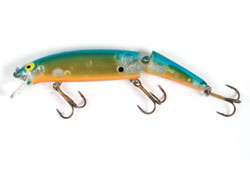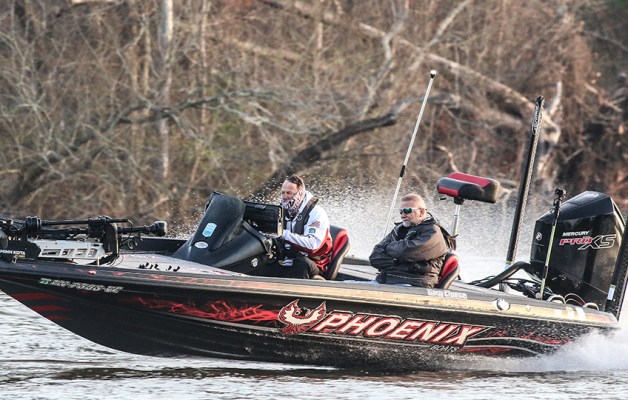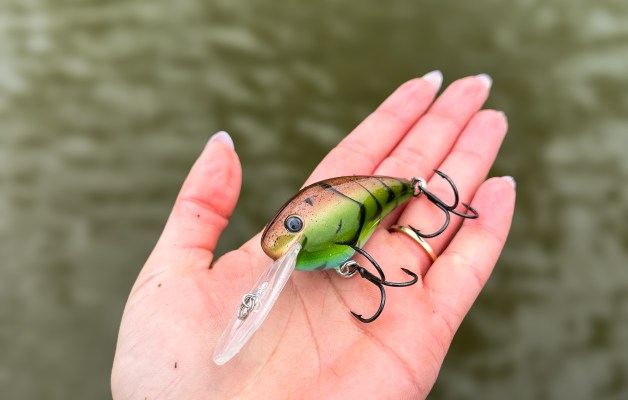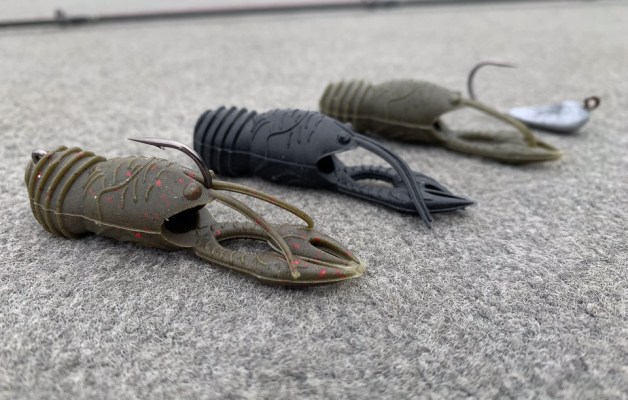
Like many businesses, the lure industry seems to progress at an accelerated rate each year. Every season, more new baits are introduced compared to the previous season. Just last year, Pure Fishing introduced about 1,000 new or modified baits. And that was just one lure company.
Through the decades of change, however, a few baits have maintained popularity and remained constant, with little change to form or function. Examples include the Heddon Zara Spook, Norman DD22, Rat-L-Trap and Rebel Pop-R.
But before all those baits, there were minnow-imitating hard baits— also known as minnow baits or stickbaits.
Minnow baits are responsible for starting two of the world's largest lure companies, Rapala and PRADCO.
"Rapala was founded by Lauri Rapala of Vaasky, Finland, on a hand-carved, pine-bark Original Floating in 1936 — crude but equivalent to a No. 11," said Mark Fisher of Rapala. "Then it quickly evolved into balsa wood construction.
The Original Floating Rapala was followed by the Countdown Minnow in 1965 and the Jointed Floating Minnow in 1974."
"The Rebel Minnow, introduced in 1961, was the original Rebel Lure and, in fact, launched the Plastics Research and Development Corporation (PRADCO) into the fishing lure business," said Jeff Samsel of PRADCO. "Founder George Perrin was a big fisherman and wanted a minnow bait that offered a particular action. The first Rebel Minnow was the F10, which is the 3 1/2-inch version, and early prototypes were first tested in the pool at Mountain Harbor Resort on Lake Ouachita. The Rebel Minnow was an immediate hit, and Rebel was off and running, soon to expand size offerings and then to move to other shapes."
Quietly Popular
Clearly, the minnow bait was one of the first hard bait forms, but it may surprise serious bass anglers that minnow baits are still some of the top-selling bass lures— a remarkable fact considering the lack of press these old-style lures receive when it comes to bass fishing. Many minnow bait models, of course, are used for other gamefish, but a huge number of minnow baits are still used specifically for bass.
According to Fisher, Rapala's Original Floater has maintained the No. 1 sales position among all Rapala baits, selling 1.5 million pieces annually in the United States. Shad Raps are No. 2, selling 1.3 million per year, and X-Raps are third at 1.25 million annually. Shad Raps are crankbaits, but X-Raps, especially the shallow running models, are modern, all-purpose minnow baits— putting two of Rapala's three top selling baits in this category.
PRADCO's No. 1 minnow bait is the Bomber 15A. The 15A series ranks in the Top 10 of all PRADCO's hard baits and according to Samsel, its popularity truly spans from coast to coast.
For the Nostalgia Of It
The early days of stickbaits hold fond memories for many anglers. "I remember the day I went to the store and bought my first Smithwick Rogue," said Elite Series pro Alton Jones of Waco, Texas. "It was in the '80s, and I was in high school. Back then, when the Rogue first came out, it wasn't necessarily considered a jerkbait, but more of a traditional minnow bait. I specifically remember the anticipation I felt going to the lake that day. I felt I had a new tool in my tacklebox."
Many of the original minnow baits are now considered jerkbaits or wake baits. These tactics are relatively recent advances in the history of the minnow bait. They got their start from traditional minnow-style lures, and some of the earliest minnow baits have simply been adopted by anglers as jerkbaits or wake baits, although the original purpose was slightly different.
Back To The Basics
The early Rapala baits and the Rebel Minnow provided great advances in the lure industry. Other minnow baits came along later that further advanced their popularity and the various ways the baits were utilized.
"The Cotton Cordell Red Fin came out as a striper bait, and a lot of striper guides using it were catching big largemouth," said Elite Series pro Scott Rook of Little Rock, Ark. "So some of the largemouth fishermen started throwing it, and the technique took off."
Minnow baits of old were traditionally retrieved in a steady fashion with an occasional twitch— jointed minnow baits, especially, were often simply retrieved without pauses. They were, and still are, extremely shallow running baits. Like all lures, as anglers experimented with the bait, new techniques developed.
"They just require a slow retrieve, sometimes waking the bait across the top of the water," Rook said. "But Rapala's Original Floater often works best with a twitch-and-let-sit, twitch-and-let-sit retrieve. You need pretty clear water for that because it's all visual."
Jones added similar comments. "With the Rebel Minnow and other minnow baits, I don't fish them like jerkbaits," he said. "I retrieve them in a steady fashion, with an occasional pause. I use the Rebel a lot in smaller waters like ponds and creeks, and usually just retrieve the bait like a shallow running crankbait. They really do catch a lot of bass.
"The Bomber Long A is a little different," he continued. "I don't wake the bait, but I do fish it more like a topwater. I make long casts to specific targets— wood, weeds, rocks — and let it sit on the surface until all the ripples disappear. Then I give it a slight twitch and let it sit again. The strike will almost always come at one of two moments — either when the bait first hits the water or after the first tiny twitch. Sometimes, when the bait is just sitting there, bass will come up and just stare at it. Then when you twitch the bait, the bass' instinct takes over and he unloads on it, whether he is hungry or not. It is an exciting way to catch fish. When I'm doing that, I don't work the bait all the way back to the boat, just around specific targets."
Best Times And Locations
"Minnow baits are a guarded secret for many pros," Rook said. "They work best during prespawn and postspawn, when fish are staging (either preparing to move shallower or preparing to move deeper). Jointed Red Fins worked well at the 2006 Elite Series event on Clarks Hill. Blueback herring were spawning in 2 to 4 feet, and the fish were hitting those herring-imitating baits."
Mark Tucker — a pro from St. Louis, Mo.—waked a Red Fin for most of the event and finished sixth.
"Also, minnow baits work great in areas where fish suspend in the trees— such as in the lakes in the Ozark Mountains and other highland reservoirs," Rook explained. "The Jointed Red Fin has been a secret on Table Rock for years. Some of the locals know how to fish the bait, but they don't talk about it. You may have a tree in 50 feet of water coming up to 10 feet, and you can throw a minnow bait over the top of the tree, pause it, and fish will come up out of the tree and hit it."
According to Rook, Rapala's Original Floater is a secret down in Florida. After a cold front, he explained, when Florida bass are really lethargic, throw an Original No. 7, No. 9 or even a big 11 and twitch it and let it sit on the surface. On a cool, bright, high-pressure day, big bass will slam that bait on the surface.
One of Jones' favorite times to throw a minnow bait is during the postspawn when bass are guarding fry in water less than 5 feet deep. He simply twitches a Long A around cover and structure.
"Bass just can't seem to stand that bait floating motionless above their fry," he said. "The first twitch is all it takes to provoke a strike."
The preferred places to fish minnow baits before and after the spawn for both Rook and Jones tend to be natural lakes or reservoirs with a lot of grass and clear to slightly stained water — places like Okeechobee, Ouachita and Sam Rayburn.
As Rook mentioned, summer is a great time for minnow baits in lakes that hold a lot of bass suspended in deep trees — common conditions at Table Rock.
Minnow baits generally work better for largemouth, although what some consider a modern minnow bait, the X-Rap, does excel in the smallmouth world. For the most part, the slower presentations are deadly for largemouth but often ignored by smallies.
Try Them Again
Anyone who has fished for a few years has probably tried some of the old-style minnow baits. For some reason, we anglers often abandon these solid performers as new baits catch our attention. So a very ironic situation sets up:
Despite the fact that minnow baits are some of the best selling lures on the market, many fish have never seen one.
Perhaps it's now time to reintroduce bass to this style of bait.
Modifying Minnow baits For Waking
Some minnow baits can be retrieved at a particular speed to keep them at the surface, actually bulging water upward. It's called waking, not unlike the retrieve common with spinnerbaits. The additional water movement on the surface often attracts both feeding and inactive fish.
Numerous floating minnow baits will wake with no modifications. The Cotton Cordell Red Fin is a prime example.
Other stickbaits, both one piece and jointed, dive a few inches deep and don't create the waking effect. Elite Series pro Scott Rook has a simple solution to keep the bait right under the surface, pushing water up, and leaving a major wake.
"You just need to push that short bill down a little," Rook said. "I have gone as far as putting a cigarette lighter on the bill to heat it up and then bend it down so it doesn't dive at all. You have to reel most minnow baits really slow out of the box if you want to wake them, but if you bend the bill down just a little bit, you can reel it a little faster."
The Players
Any kind of stickbait can be grouped into the category of minnow baits. However, a group of minnow baits have distinguished themselves for a distinct technique: jerkbaits, such as Smithwick Rogues and Rapala Husky Jerks. For the purpose of this article, we're not including them in the list of popular, traditional minnow baits.




